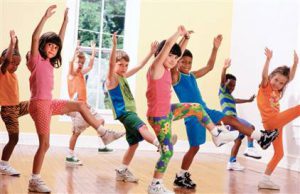 低学年では,ダンスの時間を別に設けなければならない。ダンスは,子供にとって大きな喜びであるばかりでなく,体のためにも,美的感覚の訓練にもなる。ダンスの基本を学んだ後に,集団でするダンスを教えるのがよい。これは,幼い子供たちにも良さが容易にわかる協力の一形式である。唱歌(歌唱)についても同様のことが言えるが,ただし,ダンスよりも少し後で始めなければならない。その理由は,ひとつには,唱歌はダンスのような筋肉を使う喜びを与えないからであり,ひとつには,(唱歌のほうが)基本がいっそう難しいからである。全員ではないにせよ,大部分の子供は,歌を楽しんで歌うであろう。そこで,童謡(nursery rhymes)のあとは,本当に美しい歌を学ぶべきである。最初に子供たちの趣味を悪くしておいて,その後に純化を試みる理由はまったくない。それでは,せいぜい(良くても),人を気取りやにするだけである。おとなと同様,子供も音楽的な才能には大きな差がある。そこで,もっと年上の子供たちの場合は,比較的難しい歌を習うクラスは選抜によって別に設ける必要があるだろう。そうして,彼らにおいても,歌うことは,強制されるのではなく,自発的でなければならない。
低学年では,ダンスの時間を別に設けなければならない。ダンスは,子供にとって大きな喜びであるばかりでなく,体のためにも,美的感覚の訓練にもなる。ダンスの基本を学んだ後に,集団でするダンスを教えるのがよい。これは,幼い子供たちにも良さが容易にわかる協力の一形式である。唱歌(歌唱)についても同様のことが言えるが,ただし,ダンスよりも少し後で始めなければならない。その理由は,ひとつには,唱歌はダンスのような筋肉を使う喜びを与えないからであり,ひとつには,(唱歌のほうが)基本がいっそう難しいからである。全員ではないにせよ,大部分の子供は,歌を楽しんで歌うであろう。そこで,童謡(nursery rhymes)のあとは,本当に美しい歌を学ぶべきである。最初に子供たちの趣味を悪くしておいて,その後に純化を試みる理由はまったくない。それでは,せいぜい(良くても),人を気取りやにするだけである。おとなと同様,子供も音楽的な才能には大きな差がある。そこで,もっと年上の子供たちの場合は,比較的難しい歌を習うクラスは選抜によって別に設ける必要があるだろう。そうして,彼らにおいても,歌うことは,強制されるのではなく,自発的でなければならない。
In the early years at school there should be a time set apart for dancing, which is good for the body and a training for the aesthetic sense, besides being a great pleasure to the children. Collective dances should be taught after the elements have been learnt ; this is a form of co-operation which young children easily appreciate. Similar remarks apply to singing, though it should begin a little later than dancing, both because it does not afford the same muscular delight, and because its rudiments are more difficult. Most children, though not all, will enjoy singing, and after nursery rhymes they should learn really beautiful songs. There is no reason to corrupt their taste first and try to purify it afterwards. At the best, this makes people precious. Children, like adults, differ enormously in musical capacity, so that the more difficult singing classes would have to be reserved for a selection among the older children. And among them singing ought to be voluntary, not enforced.
出典: On Education, especially in early childhood, 1926, Pt. 2:Education of character, chap. 15: The school curriculum before fourteen
詳細情報:http://russell-j.com/beginner/OE15-060.HTM
<寸言>
低学年においては、体の全身で行うダンスを教えることを先にして,歌を唱和することはその後にしたほうがよい、とのラッセルのアドバイス。
